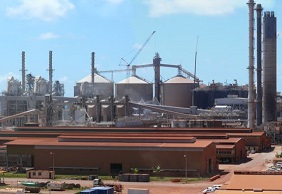High Court throws out appeal by mining giant Rio Tinto in Mesothelioma case
Mr Zorco Zabic worked at the Gove Aluminium Refinery in the Northern Territory in the 1970’s and was exposed to asbestos dust and fibre from lagged pipes. He was diagnosed as suffering from malignant mesothelioma in early 2014.
At first instance, the Supreme Court Trial Judge held that Mr Zabic developed mesothelioma as a result of his exposure to asbestos at the Gove Aluminium Refinery, which is now owned by mining giant, Rio Tinto.
However, the Trial Judge ruled against Mr Zabic on the basis that his case was caught by the Workers’ Rehabilitation & Compensation Act 1986 (NT) (“the NT Act”), which prevented him from bringing a court action for his injury. Essentially, the NT Act abolished all court based damages for workers in respect of injuries that occurred after the NT Act was introduced on 1 January 1987.
Mr Zabic appealed the Trial Judge’s decision and was successful in having the Court of Appeal overturn that ruling.
The critical issue to be determined by the Court of Appeal was when the cause of action arose. In particular, whether the compensable damage occurred shortly after inhalation of asbestos fibres which lead to the development of mesothelial cells, or whether the cause of action only arose when the tumour was complete, when symptoms first presented themselves or when the diagnosis was made.
The Court of Appeal held as follows:-
- “We consider that the Appellant sustained an injury of the kind defined in the NT Act during and following his inhalation to asbestos fibres”.
- “More relevantly, we consider that the Appellant sustained compensable damage at the time when such inhalation caused changes in his mesothelial cells. According to the medical evidence, these changes began to occur very soon after the Appellant’s exposure to asbestos, and prior to 1987”.
- “Even though such changes were not symptomatic, and even if such changes may not have been discoverable by medical investigation methods available then, or even now, the subsequent development of the Appellant’s malignant mesothelioma establishes that the damage to the Appellant’s mesothelial cells, prior to 1987, was material damage, and thus compensable. That damage inevitably and inexorably lead to the onset of malignant mesothelioma”
- “The fact that the damage which he had prior to 1987 has become worse and symptomatic does not gain say the conclusion that he did in fact have compensable damage, and thus a cause of action prior to 1987″.
Rio Tinto subsequently appealed the Court of Appeal’s decision to the High Court of Australia. The High Court ruled against Rio Tinto, and upheld the decision of the Court of Appeal in favour of Mr Zabic.
The decision means that anyone who develops mesothelioma from employment based asbestos exposure in the Northern Territory can now access court based damages.
The decision also endorses the long held approach in Queensland to the determination of work related mesothelioma claims.
Summary provided by Sean Ryan, vbr Lawyers
